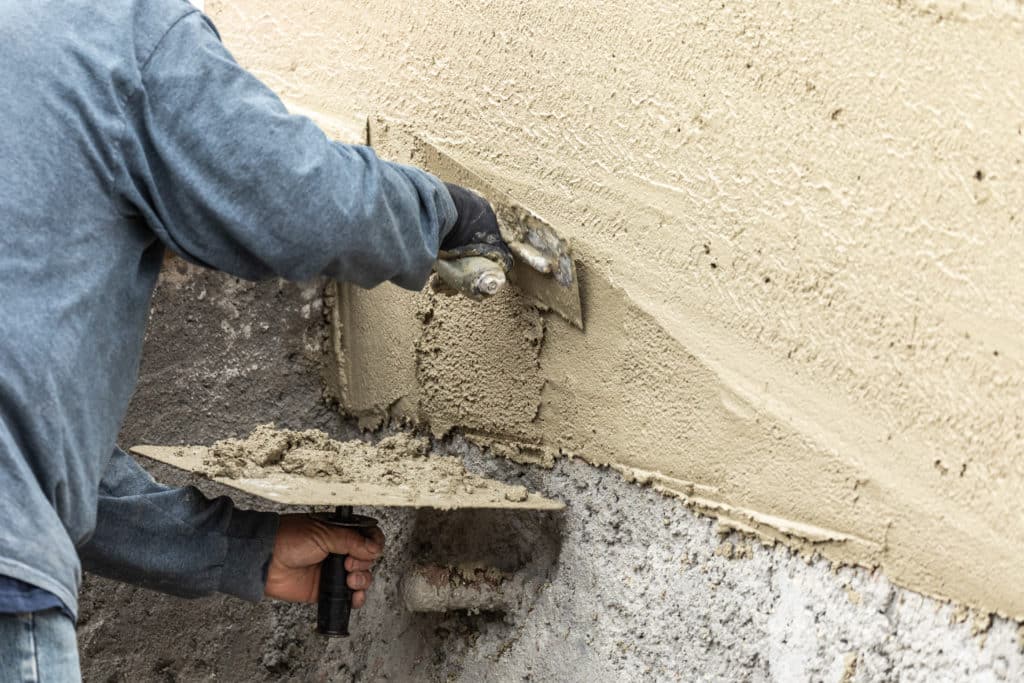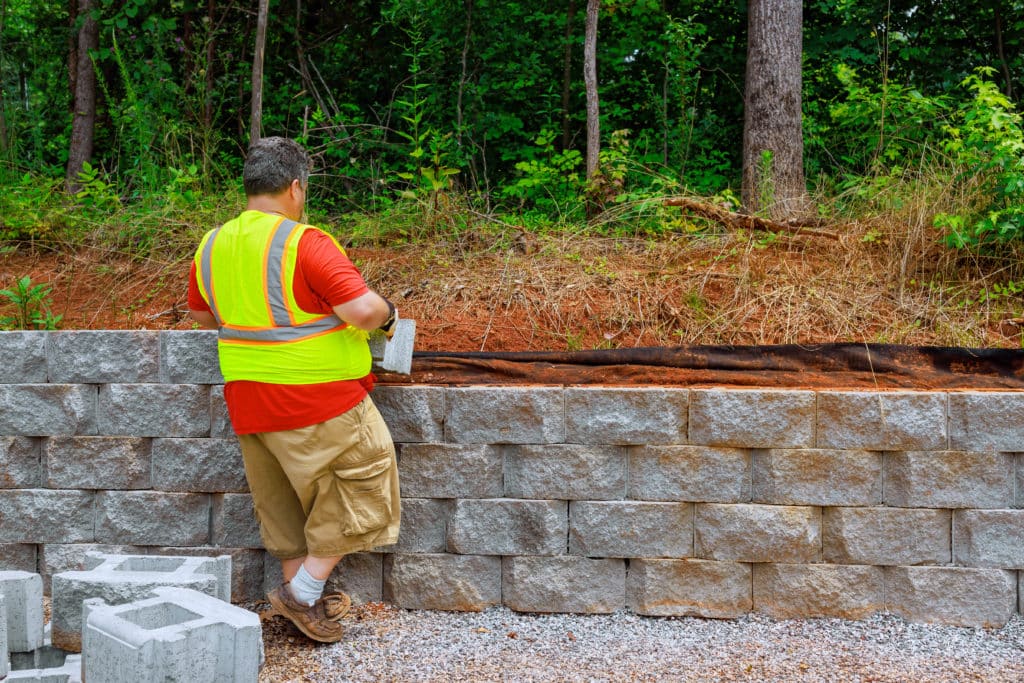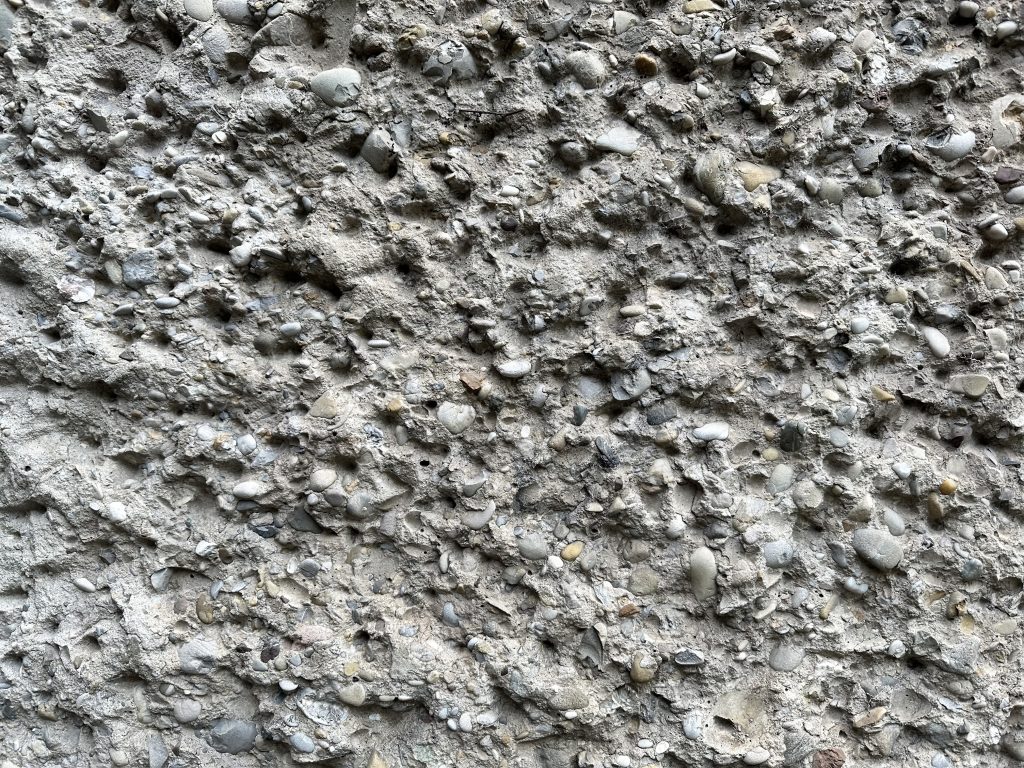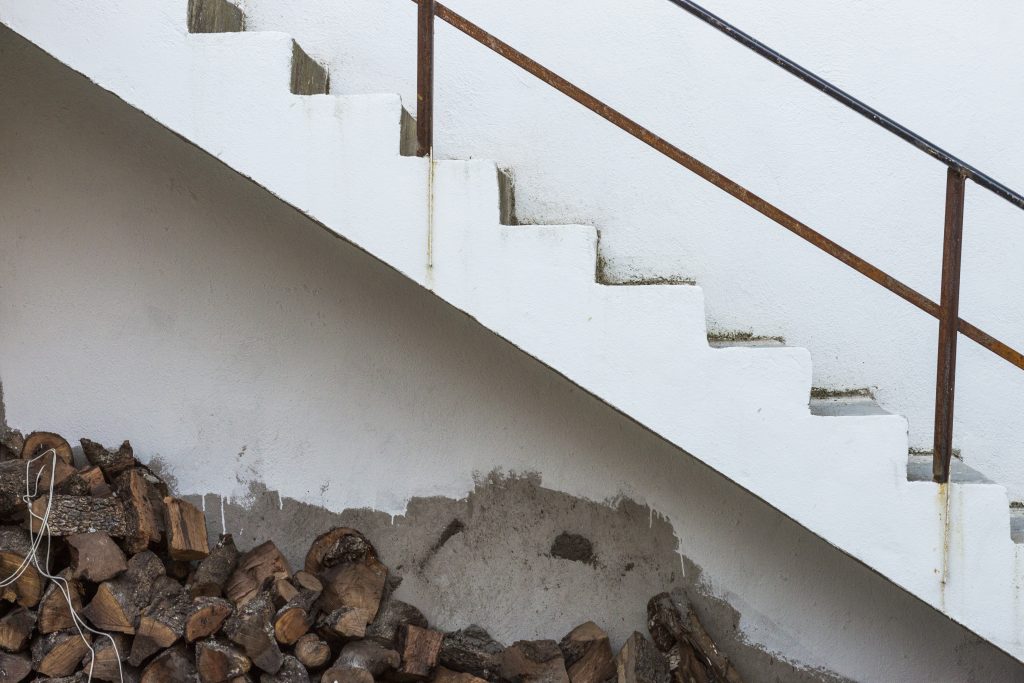Retaining walls serve a critical function in landscaping and construction, acting as stabilizing structures that manage soil erosion and runoff. Over time, these walls can suffer from damage due to soil pressure, environmental wear, or improper drainage, compromising their structural integrity. Understanding how to repair a retaining wall is vital for homeowners and property managers alike, as it ensures safety, preserves property value, and maintains the aesthetic appeal of the landscape.

Assessing the condition of a retaining wall for signs of damage such as cracking, bulging, or leaning is the first step towards repair. Small cracks might only require simple fixes, while substantial shifts in the wall could indicate deeper issues that need a more thorough approach. The choice to repair a retaining wall involves a series of decisions and methods, from minor fixes to complete rebuilds, depending on the severity of the damage and the wall’s overall stability.
Methods to stabilize and repair a retaining wall range from the use of helical anchors for anchoring the wall to the earth behind it, to more extensive construction efforts that replace or reinforce the existing structure. Homeowners should also consider the importance of proper drainage to prevent future issues. In some cases, consulting with a professional is recommended to determine the best course of action and to ensure the wall is repaired safely and effectively.
Understanding Retaining Walls

Retaining walls are essential structures designed to counteract the lateral pressure of soil. The age of a wall may contribute to its condition and potential need for repair. They employ various materials such as concrete, stone, wood, or brick to provide support to slopes and manage soil movement.
- Materials: Common choices include:
- Concrete: Durable and strong.
- Stone: Aesthetically pleasing, natural look.
- Wood: Blends well with gardens but less durable.
- Brick: Offers a classic appearance.
- Blocks: Interlocking units for easy assembly.
The construction of a retaining wall is crucial for its longevity. An appropriately built wall resists the pressures exerted by soil, especially when the soil becomes waterlogged, which can increase the pressure significantly.
- Pressure Management: Walls must be designed to handle the immense pressure from the soil behind them. This often requires proper backfill and drainage to prevent water accumulation and soil pressure from compromising the wall’s integrity.
Stability Factors:
- Foundations must be stable and strong.
- Drainage systems are critical to reduce hydrostatic pressure.
- Walls should lean into the hill to improve stability.
Retaining walls constructed with quality materials and techniques can withstand the test of time. However, climate, soil conditions, and poor maintenance can lead to issues requiring repair. Frequent inspections can help identify potential problems early, ensuring the wall continues to operate effectively in its critical role of soil retention.
Common Problems and Diagnosis

Seamless Texture Of Medieval Wall Of Stone Blocks
When examining a retaining wall, it is critical to first understand and recognize the common forms of damage that can compromise its structural integrity. This knowledge assists in undertaking the appropriate steps for effective repair.
Identifying Damage
The initial step in the diagnostic process is to meticulously inspect the retaining wall for visible signs of damage. Cracks in the wall are often the most apparent indicator, ranging from fine hairline fractures to wider gaps. These cracks can evolve from seasonal temperature fluctuations or water damage. Another major concern is when a retaining wall starts leaning, suggesting the possible movement of soil or inadequate foundational support. Rot in timber retaining walls is also a tell-tale sign of deterioration requiring attention.
- Visual Signs: Look for cracks, bulging, or leaning of the wall.
- Rot Detection: Check for soft spots or discoloration in wood walls.
Assessing Structural Issues
After identifying physical damage, the next step involves assessing the underlying structural issues that may necessitate the consultation with a structural engineer. This professional can determine if the problems are due to a compromised foundation or other issues such as insufficient drainage or the impact of root systems. Foundation issues demand immediate action, as they can lead to further deterioration and pose safety risks.
- Foundation Inspection: Assess stability and presence of gaps beneath the wall.
- Consultation: In cases of significant damage, contact a structural engineer.
Repair Techniques

In repairing retaining walls, the focus is on addressing structural concerns efficiently—be it sealing fissures, rectifying a tilt, or optimizing water management to prevent future damage. Each repair strategy varies depending on the severity and type of damage.
Fixing Minor Cracks and Damage
For minor repairs such as cracked sections or damage, one can apply a masonry repair mortar or concrete caulk. First, the area should be cleaned, removing any loose material before applying the repair compound. It is essential to ensure that the mortar adheres well and matches the existing material for a seamless fix. Backfill material, typically gravel, may also need to be topped up to provide adequate support behind the wall.
Correcting Leaning Walls
Leaning walls typically require more extensive repair, possibly involving partial or complete rebuilds. The wall must be dismantled up to the level where it remains plumb. Afterward, they may use geogrids or soil reinforcement to add stability. The backfill should then be properly compacted, and it may be necessary to adjust the level of the foundation to ensure the wall’s longevity.
Drainage Solutions
A critical component of retaining wall repair is correct drainage. Improper drainage can lead to water pressure build-up and further erosion. Installation of drainage solutions such as weep holes or a drainage pipe system behind the wall can alleviate hydrostatic pressure. Additionally, using a filter fabric along with a drainage layer of gravel can help prevent clogging and maintain the efficacy of the drainage system.
Tools and Materials Needed

Preparing the necessary tools and materials before commencing repair on a retaining wall is crucial to ensure that the process is smooth and efficient.
Choosing the Right Materials
The longevity and durability of a retaining wall hinge on selecting appropriate materials. Concrete and stone are favored for their strength and ability to withstand the elements, making them suitable choices for most retaining walls. When dealing with timber retaining walls, one should opt for pressure-treated lumber to combat rot and pest infestation. In areas that experience heavy rainfall or when fortifying the backfill, gravel is indispensable for efficient drainage. For reinforcement in certain types of walls, steel rods known as rebar may be necessary to provide additional stability.
Suggested Materials:
- Concrete: For new blocks or poured concrete repairs.
- Stone: A variety of stones can be used, matching the existing wall.
- Pressure-treated wood: If repairing a wooden wall.
- Gravel: For backfill and drainage assistance.
- Steel (rebar): For reinforcing masonry or concrete walls.
Required Tools for the Job
The proper tools are essential for efficiently addressing any repairs on a retaining wall. A sturdy shovel is the first tool required for excavation or digging around the affected area. Masonry chisels and compacting tools are also crucial when removing damaged blocks or stones and preparing the base layer before reinstating them. Depending on the wall material, specific tools like a circular saw may be needed for wood or a trowel for spreading mortar in masonry repairs.
Must-Have Tools:
- Shovel: For excavation and moving materials.
- Masonry chisel: To carefully remove and shape stones or concrete.
- Compacting tool: To establish a solid gravel base layer.
- Circular saw (for wood walls): To accurately cut timber.
- Trowel (for masonry or concrete): For applying and smoothing mortar.
When to Hire a Professional
When it comes to repairing a retaining wall, certain conditions necessitate the expertise of a professional. Retaining wall repair can range from simple fixes to complex reconstruction that demands specialized skills and knowledge.
- Structural Concerns: If the wall shows signs of significant movement, such as bulging or leaning, a professional with experience in structural integrity should assess the situation. They can determine if there is a deeper issue with the foundation that needs attention. A structural engineer may be required to develop a repair strategy that ensures the wall’s long-term stability.
- Size and Scope: Larger walls or those that are part of an integrated landscaping scheme are typically more labor-intensive to repair. Professionals have the necessary equipment and team to handle such extensive projects efficiently.
- Regulatory Compliance: Professionals are familiar with local building codes and can ensure that repairs comply with regulations. This is crucial to avoid any legal issues that may arise from non-compliant repairs.
Here are common scenarios where hiring a professional is advisable:
- Detection of horizontal cracks or when the wall is separating from adjoining structures.
- Presence of water drainage issues behind the wall that could undermine its stability.
- When the retaining wall is part of a foundation repair, particularly if the property is on a slope.
- If the retaining wall failure has impacted surrounding structures or land.
By engaging a certified contractor, homeowners gain peace of mind that the repair is executed safely and effectively. Contractors with a track record in retaining wall projects bring a level of experience that can save time and money while reducing the risk of future problems.
In conclusion, retaining walls are crucial for supporting soil laterally, so hiring the right professional is essential for any repair work that is beyond basic cosmetic fixes.
Maintenance and Prevention
To ensure the durability and stability of a retaining wall, one must engage in consistent maintenance and implement preventative strategies. Regular maintenance can notably extend the lifespan of the wall, mitigate drainage problems, and prevent soil erosion.
Routine Inspection and Care
Routine inspection and maintenance are critical for the longevity of a retaining wall. Owners should:
- Inspect: Biannually check for any signs of wear and tear, including cracks, bulges, or leaning sections.
- Clean: Remove debris and foliage that may cause moisture retention and promote deterioration.
- Address Drainage: Ensure that weep holes and drainage systems are clear and functioning to prevent water build-up.
Preventative Measures to Avoid Future Damage
To prevent future damage to a retaining wall, several strategies should be implemented:
- Landscaping Adjustments: Choose plants that provide stability and prevent soil erosion, without overburdening the wall with their root systems.
- Soil Management: Address any issues that could lead to soil erosion, which might undermine the base of the retaining wall.
- Water Management: Install adequate drainage solutions such as gravel and drains behind the wall to alleviate hydrostatic pressure.

 CALL US NOW
CALL US NOW



